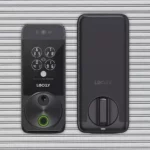
Sonos finds itself at a crossroads, largely influenced by Apple’s decisions. The tech giant’s removal of the headphone jack from the iPhone has reshaped audio consumption. Once, people gathered around stereo systems or home theaters, often relying on subpar earbuds that came bundled with their devices. Apple’s introduction of AirPods, alongside the more advanced AirPods Pro and AirPods Max, marked a significant shift toward high-quality portable audio.
Fast forward a decade, and the landscape of mobile sound is vastly different. With an array of excellent Bluetooth speakers and quality earbuds available, many users now enjoy their best audio experiences while walking their dogs or working in cafes, rather than during TV time or cooking. Additionally, streaming lossless audio has become widely accessible through services like Apple Music and Tidal.
This evolution presents a considerable challenge for Sonos and the streaming speaker market, which primarily depends on stable home internet connections and traditional listening environments. Until recently, Sonos had been slow to embrace Bluetooth technology, lacking both Bluetooth speakers and headphones for users on the go.
Now, with a redesigned app, an updated Roam Bluetooth speaker, and the debut of its first noise-canceling headphones, the Sonos Ace, the company is ready to make a significant push into the mobile audio market.
The question remains: can Sonos successfully transition from its established home audio market to the burgeoning wireless headphone segment that Apple has dominated? Achieving this will require a keen focus on customer feedback and consistent software improvements.
Sonos CEO Patrick Spence believes that the company’s late entry into the Bluetooth space is not a setback but rather an opportunity. He acknowledges a shift in listening habits, noting, “Walking the dog used to be a time of silence; now everyone has a podcast or some audio playing.” This presents a chance for Sonos to expand its product lineup to meet the diverse needs of listeners, offering a seamless audio experience throughout their daily lives.
With the launch of the Ace headphones, Sonos has officially embraced the mobile audio market. Spence emphasizes that creating headphones involves a different mindset than developing speakers, as the former demands a more intimate connection with users. “It’s truly a personal product,” he explains, recognizing the responsibility that comes with designing something people will wear throughout the day.
This focus on personal audio has been a challenge for Sonos, especially since users interact with headphones more intimately than with speakers. The company has invested years into perfecting the fit and durability of the Ace headphones, analyzing over 500 head shapes to ensure comfort and performance.
Spence acknowledges that entering the competitive headphone market, dominated by brands like Apple, Sony, and Bose, necessitates a standout product. “This is our first entry into a $5 billion category that is growing rapidly,” he states, emphasizing that the Ace headphones could be how many consumers first experience the Sonos brand.
While Sonos aims to attract new customers with the Ace, it also recognizes the importance of retaining existing users who want to integrate these headphones into their Sonos ecosystems. Spence reveals that there has been considerable demand for headphones, with “tens of thousands” of customers expressing interest.
To enhance the user experience, features like the ability to use the Ace headphones as a replacement for a Sonos Arc soundbar and spatial audio mapping aim to cater to longtime users. Additionally, Sonos is committed to creating durable products, promising five years of support even for discontinued items, which surpasses many competitors’ offerings.
Despite these ambitions, the transition to a mobile-centric approach hasn’t been without challenges. The updated Sonos app has experienced bugs, affecting user experiences with device pairing and firmware updates. While not all users have faced issues, reports of problems have surfaced, raising concerns about the app’s stability.
Spence remains optimistic, citing the team’s historical responsiveness to user feedback and ongoing updates during the review period. He acknowledges that reinventing a successful app is no small feat, but insists that the new design aims to simplify navigation and improve functionality.
Looking ahead, Sonos is positioned to be a key player in the audio market, offering speakers, soundbars, Bluetooth devices, and now headphones. This strategic diversification could give the brand a significant edge over competitors, many of whom have inconsistent offerings across audio categories.
As Spence notes, “For our first 20 years, we focused on filling homes with music. Now, we’re concentrating on how people interact with sound throughout their daily lives.” If Sonos maintains its commitment to quality hardware, its transition to a comprehensive audio lifestyle could mirror its success in home audio.







